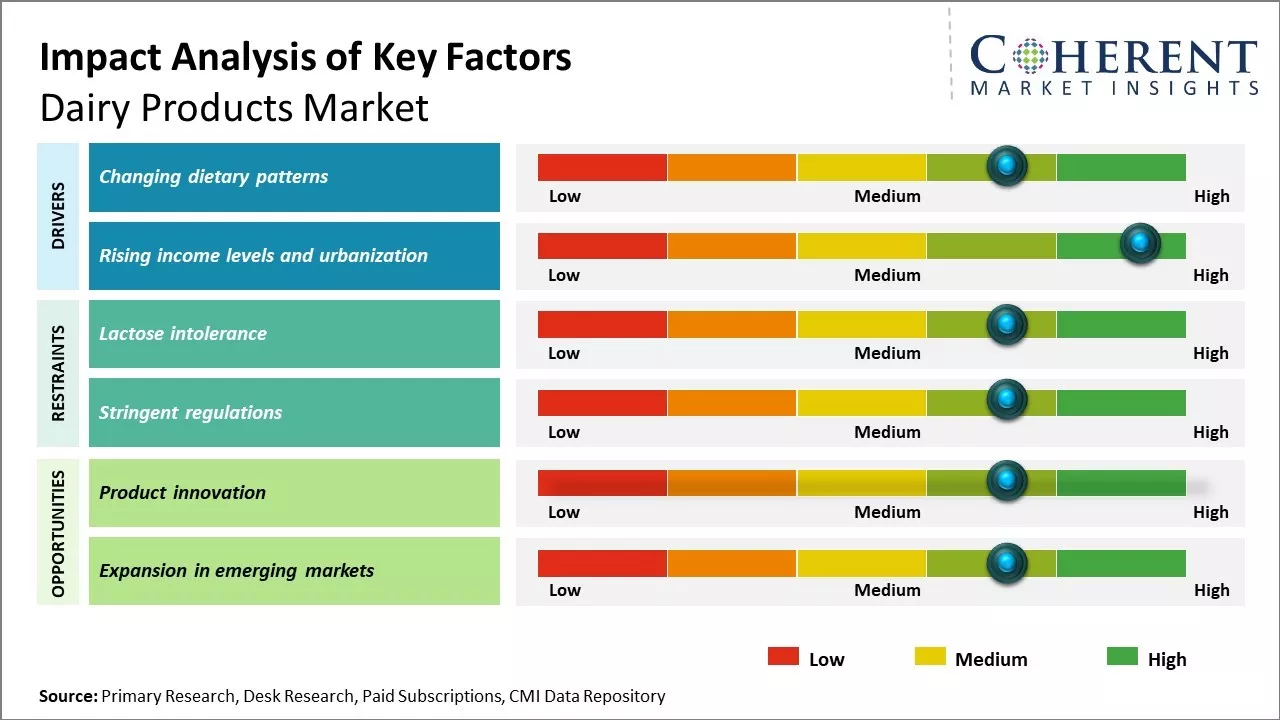The Dairy Products Market is estimated to be valued at USD 140.50 Bn in 2025 and is expected to reach USD 247.26 Bn by 2032, exhibiting a compound annual growth rate (CAGR) of 8.4% from 2025 to 2032.

To learn more about this report, Request sample copy
Factors such as rising health consciousness, changing consumer preferences, and growing demand for nutritious dairy-based products will drive the market. Increasing awareness about the health benefits of dairy products along with growing affordability is propelling the sales of value-added dairy products such as flavored milk, yogurt, cheese, butter, and cream globally. Rising living standards coupled with growing population will also augment the demand for dairy products. Manufacturers are launching innovative products to cater to dynamic consumer tastes, adopting advanced processing technologies, and leveraging e-commerce channels to boost market presence which will further aid in the market expansion.
Changing dietary patterns
One of the key drivers of the global dairy products market has been the steady shift in dietary patterns and food consumption habits across various regions. While dairy consumption has traditionally been a staple in developed Western markets, consumption in developing Asian and Middle-Eastern countries is on the rise due to increasing health awareness, disposable incomes, and hectic urban lifestyles.
There is a growing preference toward packaged dairy products such as flavored milk, yogurt, and dairy-based beverages that provide convenience without compromising on nutrition. As more people lead fast-paced lives working long hours, there is demand for dairy options that can be quickly consumed on-the-go. Living independently away from families also drives young consumers to rely more on processed packaged foods including dairy items that can be easily stored and cooked with. Rising health consciousness has been another important factor influencing dairy consumption globally. Studies proving the various benefits of dairy in maintaining strong bones, muscle development and weight management have encouraged many populations to incorporate milk, cheese and yogurt into their diets. In Asian nations where dairy was not a traditional part of cuisine, such health education campaigns by governments and industry bodies have increased awareness about dairy nutrients. This has benefitted yogurt and probiotic milk producers the most.
Joining thousands of companies around the world committed to making the Excellent Business Solutions.
View All Our Clients